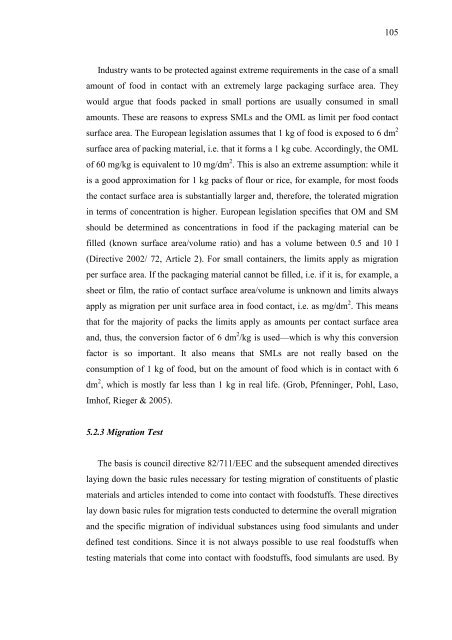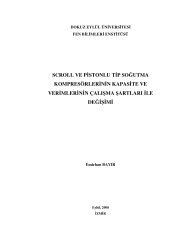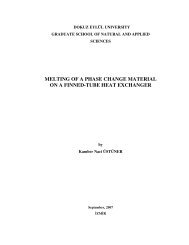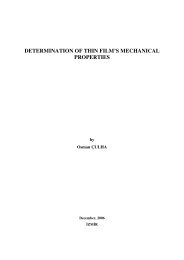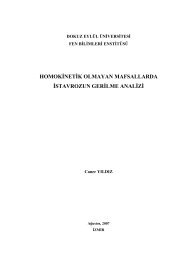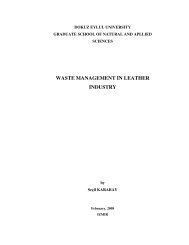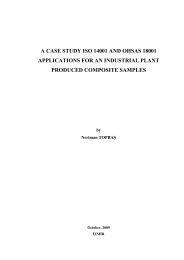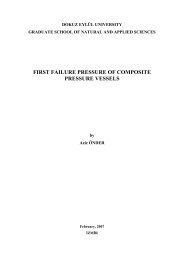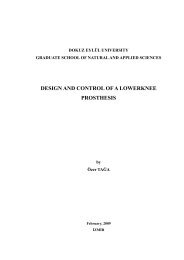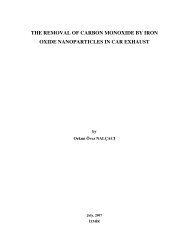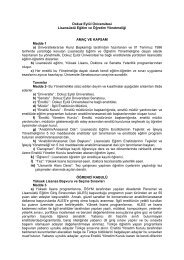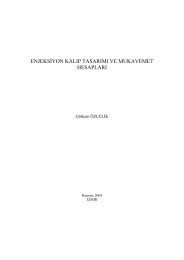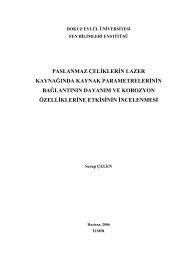104limit is not indicative of a risk. Food safety must be ensured through the control ofthe migrating components. The OML cannot be derived scientifically. It should be aslow as technically possible, taking into account that organic materials cannot beproduced free of low molecular weight material potentially migrating into food.Further, it should be coherent with tolerated food contamination from other sources:there should not be strict (and costly) limits for contaminants from one source, whilefar larger amounts are tolerated or not even investigated from others, e.g., packaging.By convention, the European limit is 60 mg/ kg, which is far higher than nearly alllimits for other foodcontaminants (Grob, Biedermann, Scherbaum, Roth, &Rieger,2005).SMLs are a risk management tool derived from toxicological data, such astolerable daily intakes (TDIs), or from a limited toxicological assessment ensuringsafety only for a low migration. As the exposure of consumers cannot be calculatedfrom consumption data (the open European system does not restrict the use of agiven authorized substance), a worst case is assumed: 1 kg of food packed inmaterials releasing the substance in question at the SML is consumed per day.However, deviation from this conservative assumption by a conversion from thelimits in terms of concentration in food or food simulant to units per contact surfacearea may strongly reduce the amount of food that can be eaten to reach the TDI.Furthermore, the EU is about to introduce the fat consumption reduction factor(FRF), taking into account that on a long term average virtually nobody consumesmore than 200 g fat per day: when food contains more than 20% fat, the measuredmigration is divided by the FRF, the percentage of fat divided by 20, i.e. by 5 if thefood consists of pure fat. The FRF does not apply to the overall migration (OM).Migration per contact surface area for the manufacturers of packaging materials,limits in terms of concentrations of migrants in food may be a problem when it isunknown how much food the material will ontact. Small amounts of food aregenerally in contact with more packaging material (higher surface area / volume)and, therefore, concentrations in food tend to be higher the smaller the portion.
105Industry wants to be protected against extreme requirements in the case of a smallamount of food in contact with an extremely large packaging surface area. Theywould argue that foods packed in small portions are usually consumed in smallamounts. These are reasons to express SMLs and the OML as limit per food contactsurface area. The European legislation assumes that 1 kg of food is exposed to 6 dm 2surface area of packing material, i.e. that it forms a 1 kg cube. Accordingly, the OMLof 60 mg/kg is equivalent to 10 mg/dm 2 . This is also an extreme assumption: while itis a good approximation for 1 kg packs of flour or rice, for example, for most foodsthe contact surface area is substantially larger and, therefore, the tolerated migrationin terms of concentration is higher. European legislation specifies that OM and SMshould be determined as concentrations in food if the packaging material can befilled (known surface area/volume ratio) and has a volume between 0.5 and 10 l(Directive 2002/ 72, Article 2). For small containers, the limits apply as migrationper surface area. If the packaging material cannot be filled, i.e. if it is, for example, asheet or film, the ratio of contact surface area/volume is unknown and limits alwaysapply as migration per unit surface area in food contact, i.e. as mg/dm 2 . This meansthat for the majority of packs the limits apply as amounts per contact surface areaand, thus, the conversion factor of 6 dm 2 /kg is used—which is why this conversionfactor is so important. It also means that SMLs are not really based on theconsumption of 1 kg of food, but on the amount of food which is in contact with 6dm 2 , which is mostly far less than 1 kg in real life. (Grob, Pfenninger, Pohl, Laso,Imhof, Rieger & 2005).5.2.3 Migration TestThe basis is council directive 82/711/EEC and the subsequent amended directiveslaying down the basic rules necessary for testing migration of constituents of plasticmaterials and articles intended to come into contact with foodstuffs. These directiveslay down basic rules for migration tests conducted to determine the overall migrationand the specific migration of individual substances using food simulants and underdefined test conditions. Since it is not always possible to use real foodstuffs whentesting materials that come into contact with foodstuffs, food simulants are used. By
- Page 4:
4ACKNOWLEDGMENTSI would like to exp
- Page 8 and 9:
8Bu çalışmada matbaada iş sağl
- Page 10 and 11:
102.2.3.1 Pigments ................
- Page 12 and 13:
125.1.4 Conformity of Foodstuff Pac
- Page 14 and 15:
2On the other hand OSHA gives diffe
- Page 16 and 17:
4The environment has a certain capa
- Page 18 and 19:
6as dynamite or black powder, that
- Page 20 and 21:
8many metal dusts, particularly tho
- Page 22 and 23:
10remediation purposes, a standard
- Page 24 and 25:
121-Flammable substances 2-Highly t
- Page 26 and 27:
14CHAPTER TWOPRINTING2.1 General In
- Page 29 and 30:
17surface of the substrate is press
- Page 31 and 32:
19Figure 2.6 Letterpress printing (
- Page 33 and 34:
212.2.2.1 Solvent-based InkThese in
- Page 35 and 36:
232.2.3.2 BindersResins and the oil
- Page 37 and 38:
25Table 2.4 The most common types o
- Page 39 and 40:
27-Precipitation. Excess water (usu
- Page 41 and 42:
29The chemicals used in each ink sy
- Page 43 and 44:
31B-Substances and preparations cla
- Page 45 and 46:
33Polybrominated bi-or terphenylsPo
- Page 47 and 48:
35Carcinogenicity. There is current
- Page 49 and 50:
37Exposure to lower concentrations
- Page 51 and 52:
39CHAPTER THREEHEALTH AND SAFETY IN
- Page 53 and 54:
41H-Compensation, rehabilitation an
- Page 55 and 56:
43Occupational injury is any such i
- Page 57 and 58:
45-The question of is there environ
- Page 59 and 60:
47• 15 % of respondents said that
- Page 61 and 62:
493.5 Exposure To Hazardous Chemica
- Page 63 and 64:
51Exposure to solvents may cause co
- Page 65 and 66: 533.5.2 Common Chemical Groups That
- Page 67 and 68: 553.5.2.4 Acids and basesStrong aci
- Page 69 and 70: 57Notwithstanding the variability i
- Page 71 and 72: 59curing: acrylates, which polymeri
- Page 73 and 74: 61Figure 3.1 Conventional and UV cu
- Page 75 and 76: 63resins (such as 3,4-epoxycyclohex
- Page 77 and 78: 653.7.2 Health And Safety In UV Pri
- Page 79 and 80: 67Effects to the eyeOver exposure l
- Page 81 and 82: 693.7.3.4 General VentilationWhere
- Page 83 and 84: 71CHAPTER FOURLEGAL FRAMEWORKS ABOU
- Page 85 and 86: 73(substances and preparations acco
- Page 87 and 88: 75As a result of the compromise, us
- Page 89 and 90: 77Exposure to UV light may irritate
- Page 91 and 92: 79It identifies the hazards and off
- Page 93 and 94: 81*Evaluate the risks and come to s
- Page 95 and 96: 83or health surveillance that has b
- Page 97 and 98: 854.1.6 Turkish Legislations4.1.6.1
- Page 99 and 100: 87Table 4.2 Occupatıonal Exposure
- Page 101 and 102: 89Regulations on OHS in National Le
- Page 103 and 104: 914. By-Law on Restriction of the P
- Page 105 and 106: 93Monitoring exposure to these chem
- Page 107 and 108: 95cure reaction will continue until
- Page 109 and 110: 97• the initial concentration of
- Page 111 and 112: 99The maximum concentration of a mi
- Page 113 and 114: 101levels of contaminants from the
- Page 115: 103Another factor to be considered
- Page 119 and 120: 107DRF, while for foods containing
- Page 121 and 122: 109harmonized legislation, the dire
- Page 123 and 124: 111The most important general requi
- Page 125 and 126: 113-Communication No :2005/34 Commu
- Page 127 and 128: 115CHAPTER SIXEXPERĐMENTAL STUDY6.
- Page 129 and 130: 117CHAPTER SEVENCONCLUSIONAn estima
- Page 131 and 132: 119Ultraviolet (UV) curing coatings
- Page 133 and 134: 121hazards make On 13 November 2004
- Page 135 and 136: 123Buser, H. R. (2001). The Seveso
- Page 137 and 138: 125Herlihy, S.L., Rowatt B., & Davi
- Page 139 and 140: 127Pocas, M.F. & Hogg, T. (2007). E
- Page 141 and 142: 129United States of. Department of
- Page 143: 131Yang Hu, C., & J. Raymond, D. J.


